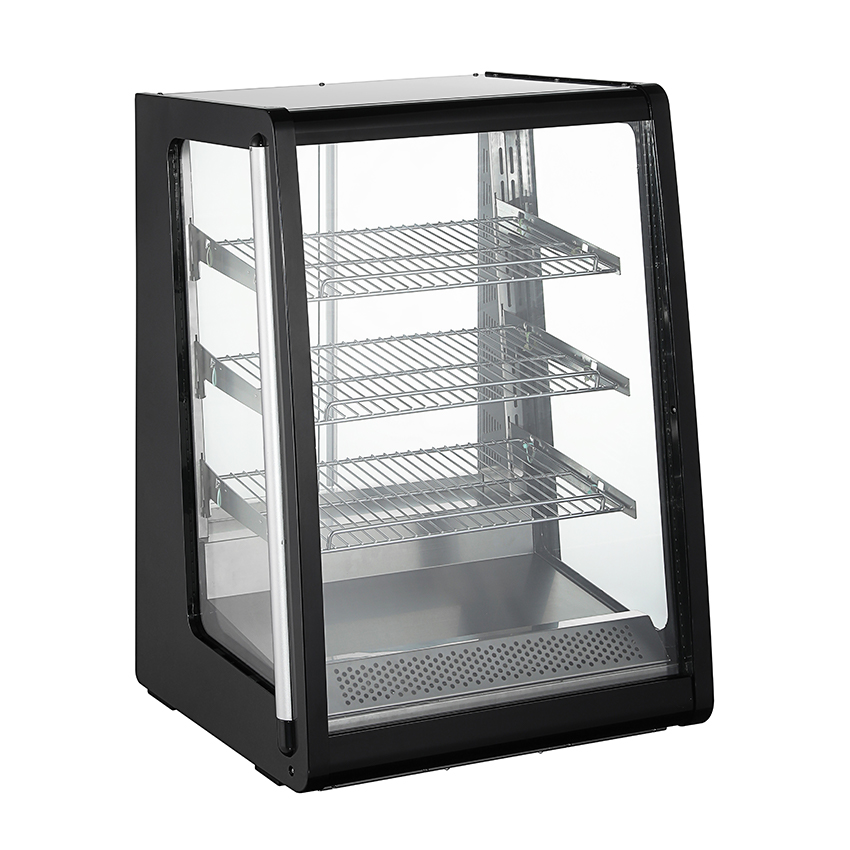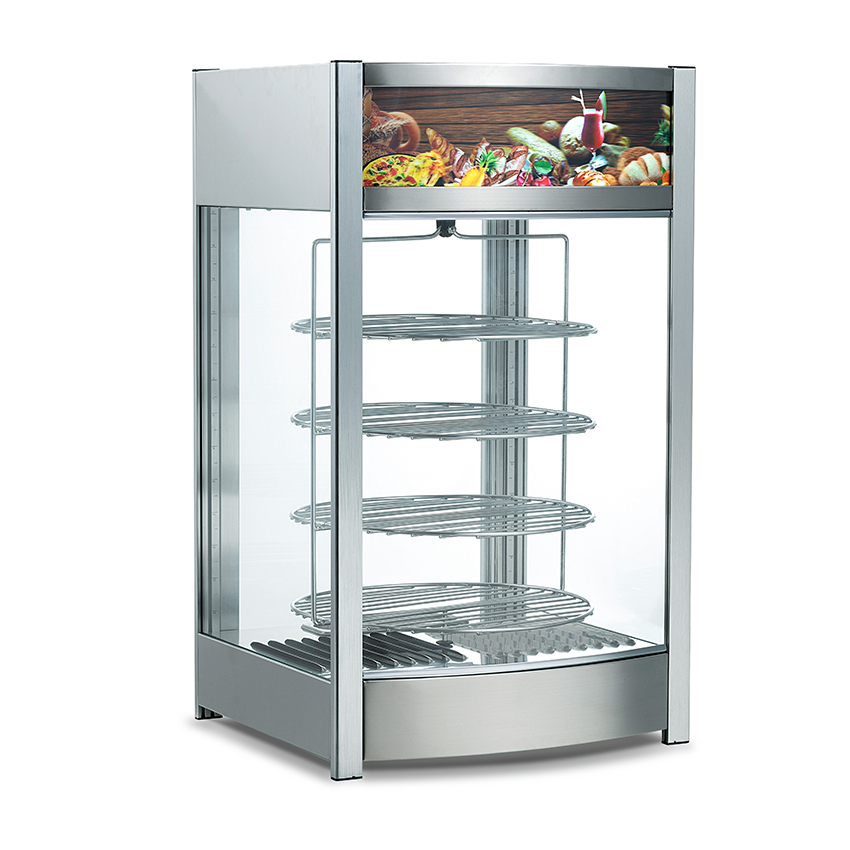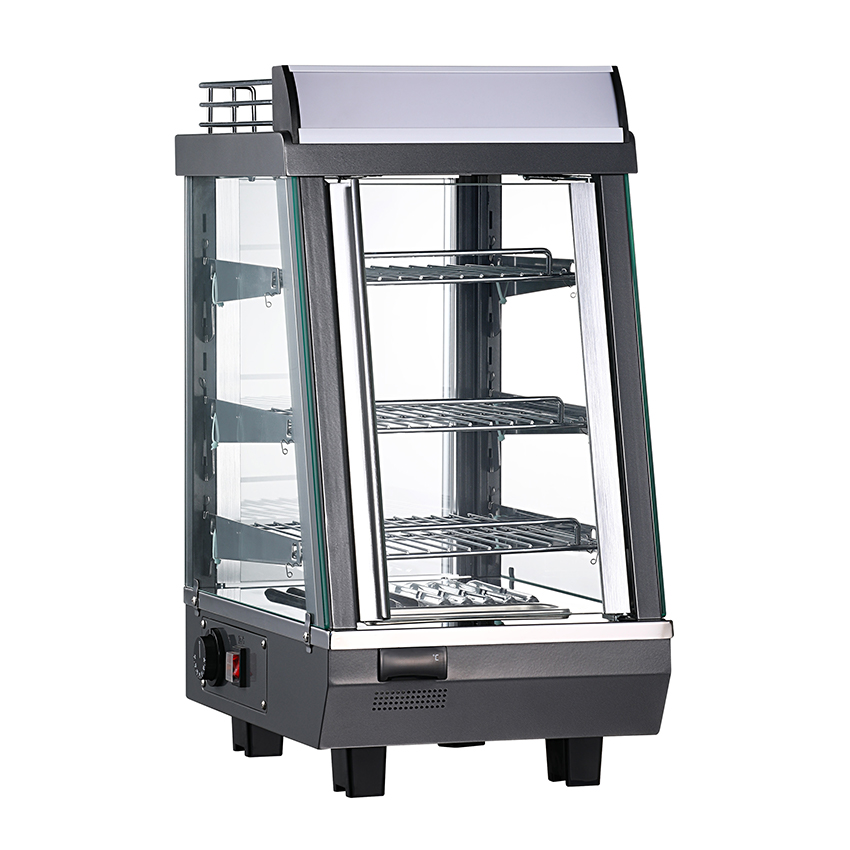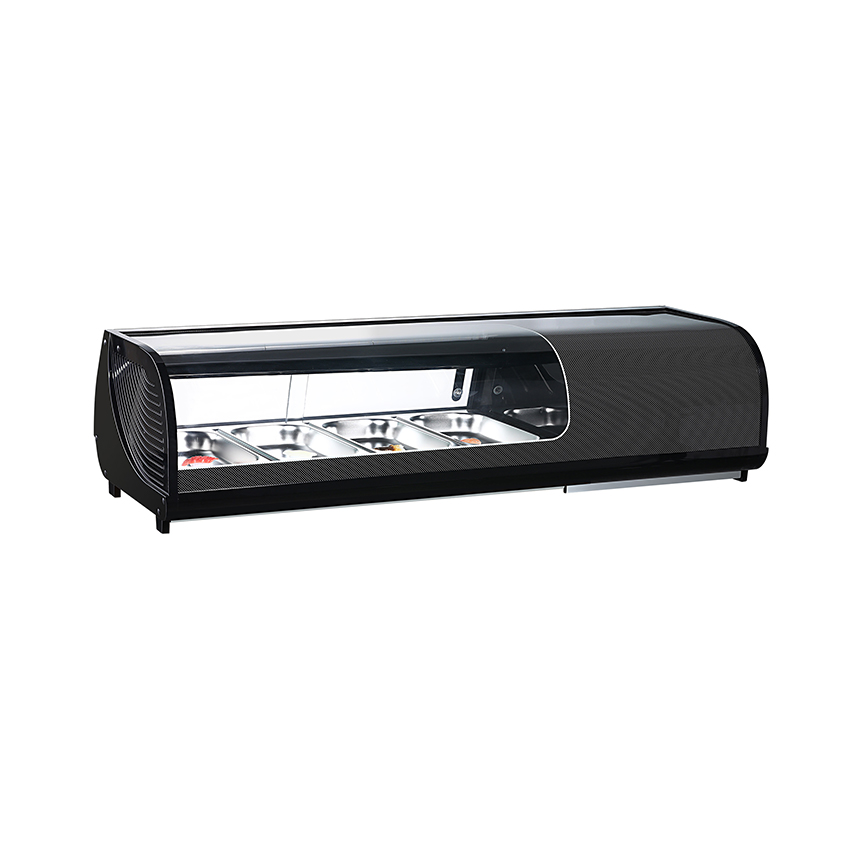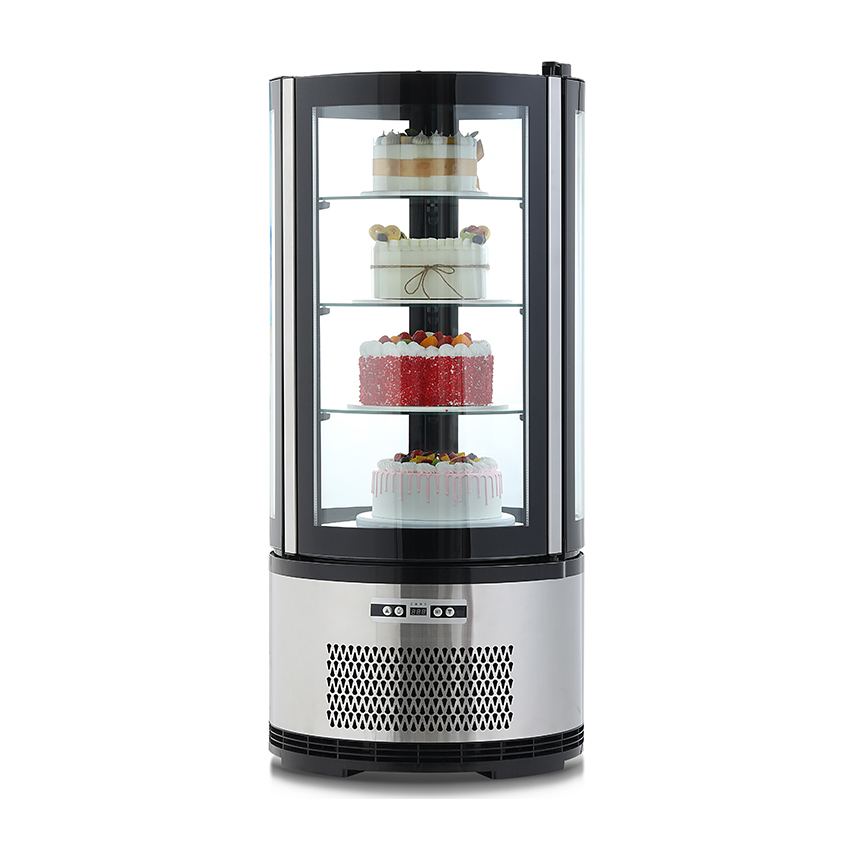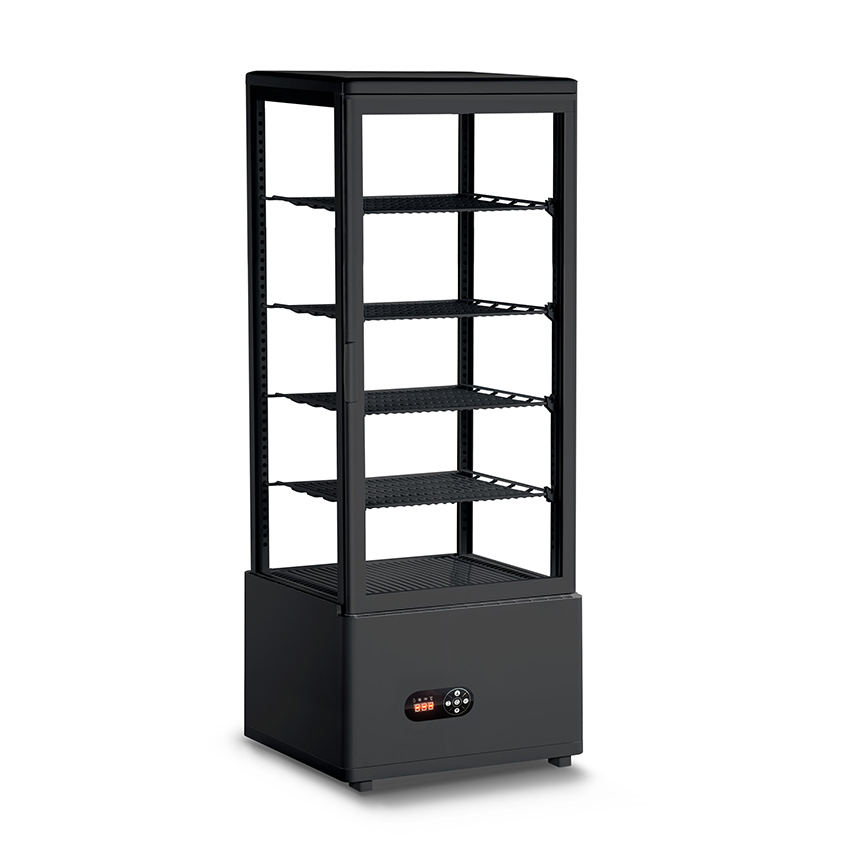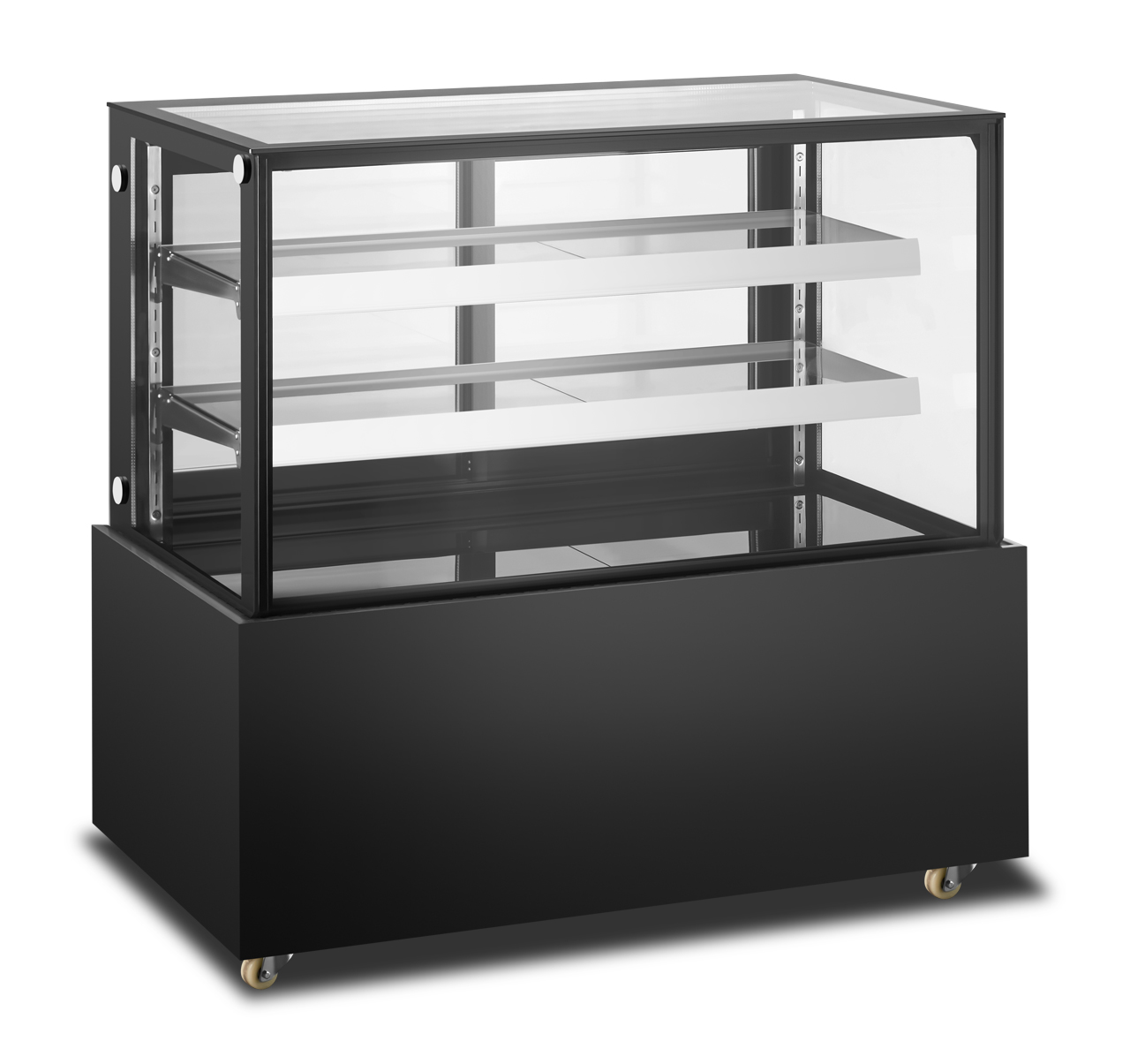Content
1. Why is it important to thoroughly clean cake display cabinets?
Food safety and hygiene (most important!):
Bacterial growth: The cream and sugar in cakes are perfect breeding grounds for bacteria (such as mold and E. coli) and pests (such as fruit flies). Tiny cake crumbs and cream spills can quickly spoil and breed bacteria if not cleaned up promptly.
Cross-contamination: Cakes exposed to air can be directly contaminated by bacteria and odors if the cabinet is unclean.
Maintaining cake quality and appearance:
Odor: Cabinets that remain uncleaned for extended periods can produce stale grease and food odors, which can be absorbed by the cakes and affect their flavor.
Affecting appearance: Fingerprints, water stains on the glass, and dust and stains inside can dull the appearance of exquisite cakes, directly affecting customer purchases.
Maintaining equipment operation and lifespan:
Refrigeration efficiency: Dust on the condenser and compressor can significantly reduce heat dissipation, resulting in poor cooling performance, increased power consumption, and even shortened compressor lifespan.
Drain hole blockage: Display cabinets usually have drainage holes at the bottom. If they are blocked by food debris, water will accumulate in the cabinet, causing more problems.
2. How to clean a cake display cabinet correctly?
(1) Daily cleaning (before or after closing)
Transferring products: Remove all cakes and shelves and temporarily store them in other refrigerated equipment.
Cleaning the interior: Use a clean, soft cloth and a food-contact surface-safe detergent (such as a diluted food-grade neutral detergent) or a proportionally prepared disinfectant.
Wipe all interior surfaces, including the side walls, back panels, bottom panels, and shelves. Pay special attention to corners and gaps.
Cleaning the glass: Use glass cleaner and a lint-free cloth to wipe all glass surfaces, including the inside and outside of the door, to ensure they are bright and free of marks.
Cleaning the shelves: Wash and dry the shelves separately before putting them back.
Air drying: Use a dry cloth to dry all cleaned surfaces to prevent the growth of scale and bacteria.
(2) Weekly/monthly deep cleaning
Power off: Be sure to unplug the power cord!
Defrosting: If it is a direct-cooling display cabinet, you need to arrange time for defrosting in advance and clean up the melted ice water.
Clean the exterior and top: Wipe the cabinet surface, top (which is prone to dust accumulation), and vents carefully.
Clean the compressor condenser: Located on the back or bottom of the cabinet. Use a vacuum cleaner or a soft-bristled brush to remove dust and lint. This is a critical step for maintaining cooling efficiency. (Note: Be gentle to avoid damaging the heat sink.)
Check and clean the drain holes: Use warm water or a thin hose to clear the drain holes to ensure smooth drainage.
3. Recommended Cleaning Frequency
Daily: Clean interior surfaces, glass, and shelves.
Weekly: Clean the exterior thoroughly, including the vents.
Monthly: Perform a deep clean, including cleaning the condenser and clearing the drain holes.
Anytime: Clean any cake crumbs or cream spills immediately.
Important Notes: Do not use hot water, hard brushes, corrosive cleaning agents (such as bleach or toilet cleaner), or organic solvents (such as gasoline) as these can damage the cabinet material and seals.
Safety First: Always turn off the power when cleaning the interior and moving parts. Special towels: It is recommended to use towels of different colors to distinguish the towels for wiping the interior, glass and exterior to avoid cross contamination.


 English
English русский
русский Español
Español Français
Français عربى
عربى italiano
italiano
